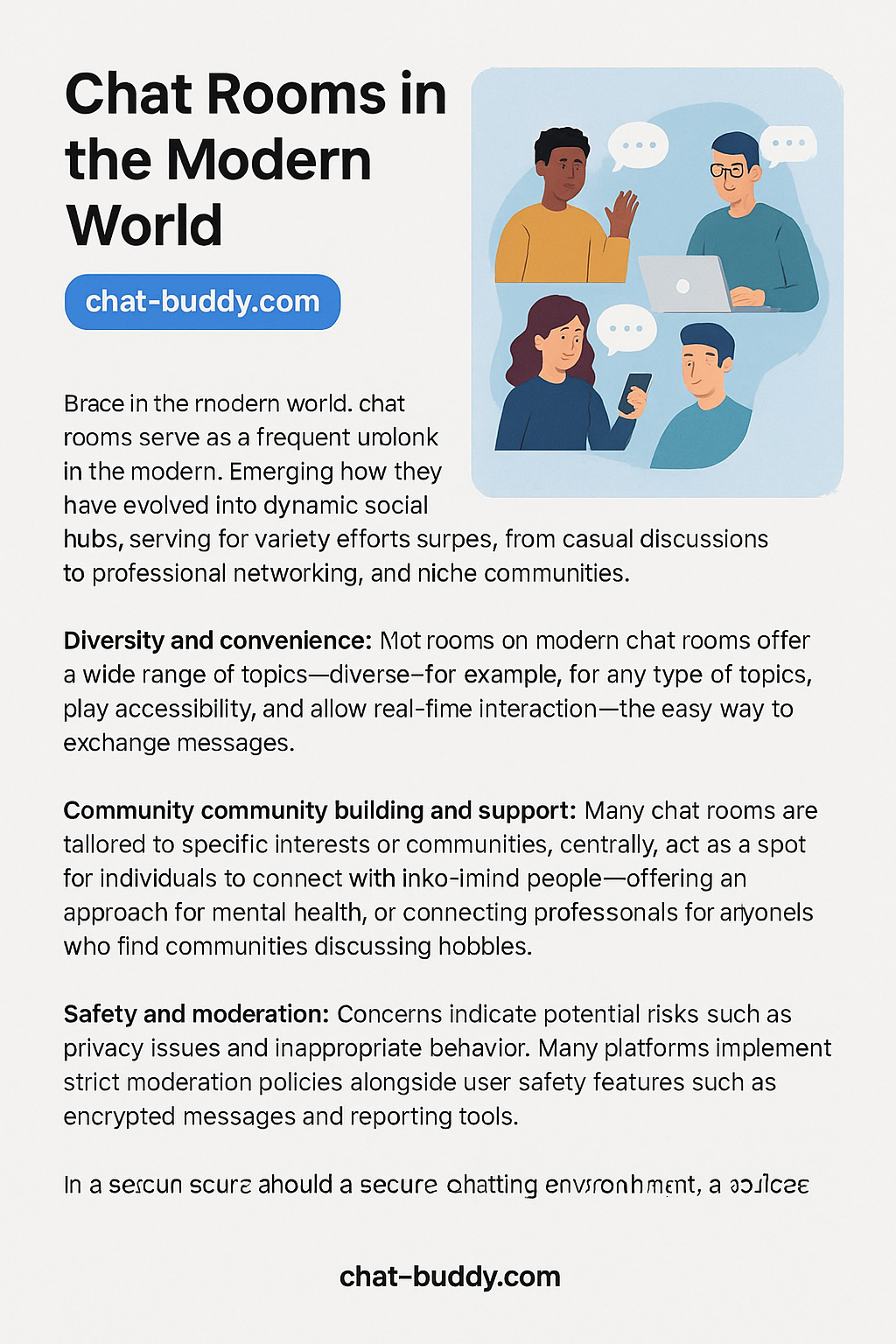Chat Rooms in the Modern World

Published by Chat-Buddy.com
In a world dominated by fast-paced technology and digital connection, the humble chat room has made a surprising yet powerful comeback. Once the domain of early internet pioneers, chat rooms have evolved from simple text-based interfaces to dynamic, real-time platforms that foster community, spark friendships, and provide immediate interaction across borders.
Today’s chat rooms serve a broader purpose than their original form in the 1990s and early 2000s. They now integrate features like video streaming, audio chat, file sharing, and even gaming integrations. These enhancements have turned chat platforms into full-fledged ecosystems that attract a diverse range of users: from gamers and professionals to hobbyists, students, and digital nomads.
Why Chat Rooms Still Matter
Despite the dominance of social media and instant messaging apps, chat rooms provide something unique: anonymity, shared interest, and spontaneity. Unlike curated social media feeds, chat rooms often foster real-time conversations with strangers around specific topics or shared experiences. Users can join a public room to meet new people or enter private spaces to have intimate, focused discussions.
Platforms like Chat-Buddy.com embrace this new era of real-time communication by combining the nostalgia of classic chat rooms with the features modern users expect—mobile compatibility, moderation tools, emoji support, media sharing, and privacy options. This makes them especially popular among younger audiences seeking alternatives to algorithm-driven feeds and invasive platforms.
Key Benefits of Modern Chat Rooms
1. Diversity of Interests:
Modern chat rooms are highly niche-oriented. Whether you're into sci-fi, mental health support, language exchange, or photography, there’s a room for it. Chat-Buddy.com, for instance, allows users to join themed rooms or even create their own for specific communities, hobbies, or events.
2. Real-Time Connection:
Unlike forums or comment sections where responses may take hours or days, chat rooms provide instant feedback. This is particularly useful for collaborative work, virtual meetups, or getting help with specific problems.
3. Low Commitment Socializing:
Chat rooms are great for people who want social interaction without long-term commitments. You can pop into a room, say hello, have a conversation, and leave without the pressure of building a social media profile or managing friends lists.
4. Mental Health and Support Spaces:
During and after the COVID-19 pandemic, chat rooms saw a resurgence as safe spaces for mental health discussions, grief support, and wellness sharing. Anonymous and moderated rooms give users a sense of comfort, especially when talking about sensitive issues.
5. Language and Cultural Exchange:
With users from around the world, many chat platforms now support multilingual rooms, translation tools, and cultural exchange hubs—perfect for learning languages or connecting with people globally.
Addressing Challenges
Of course, chat rooms are not without concerns. Privacy, moderation, and inappropriate behavior are valid issues. However, modern platforms are well aware of these risks. Chat-Buddy.com, for instance, integrates user reporting, IP tracking for abuse control, image moderation, and admin dashboards to ensure safety.
The Future of Chat Rooms
The future of chat rooms lies in their flexibility and community-driven design. Unlike larger platforms that prioritize monetization, chat rooms remain grounded in their mission: real human interaction. As more people seek authentic digital spaces—free from algorithms, influencers, and data mining—chat rooms are perfectly positioned to fill that void.
So, whether you’re looking to share your day, ask for advice, practice a new language, or just escape the noise of modern social media, chat rooms like those at Chat-Buddy.com offer a refreshing, human alternative.
Leave a Comment